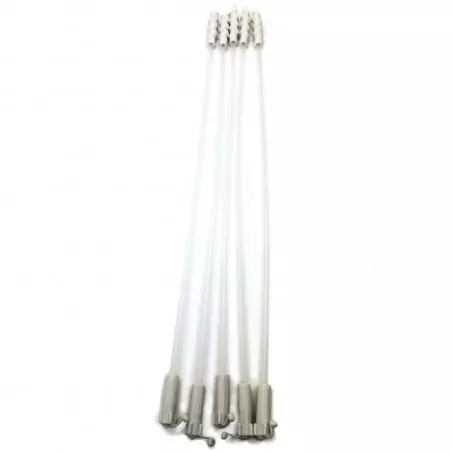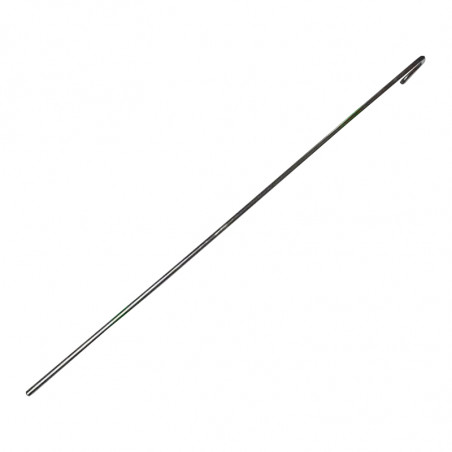The use of embryo transfer (ET) should be crucial for the pig sector, due to the important applications of this technology in livestock production. In spite of this, two facts caused that it has not been used commercially:
1) the difficulties found for the cryopreservation of pig embryos

and 2) the need of surgical methods for placing the embryos inside the recipient sows.
Nevertheless, during the last decade, the situation has changed dramatically thanks to the new techniques (vitrification) for the embryo cryopreservation and to the development of a new and unique non-surgical transfer (NST) procedure by which the embryos are transferred deeply in the uterus of the recipient sows (Martínez et al., 2004) (see figures). With these procedure, it is possible to go past the cervix and to reach the depth of a uterine horn in 3-5 minutes in the 95% of the recipient sows (Martínez et al., 20013).
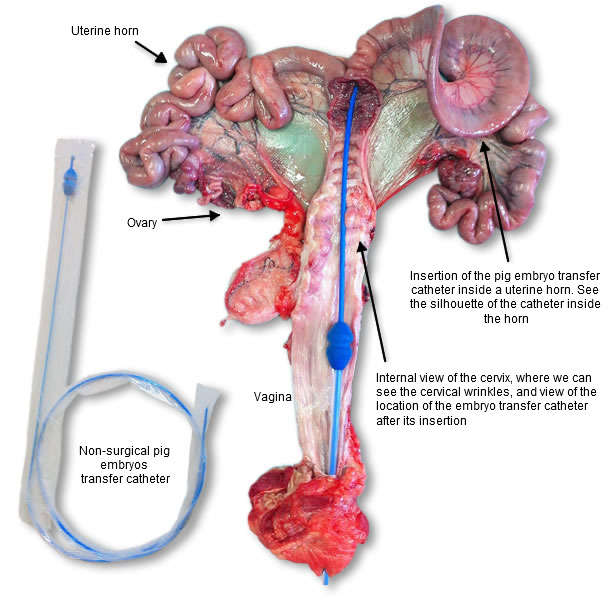
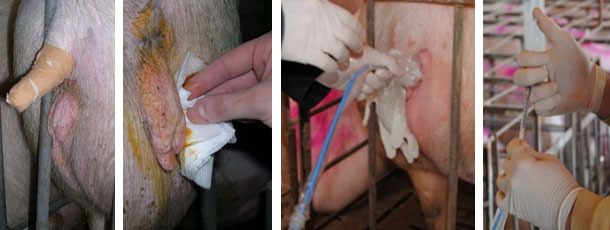
Careful cleaning of the perineum of the recipient sow and insertion of the catheter and the embryos.
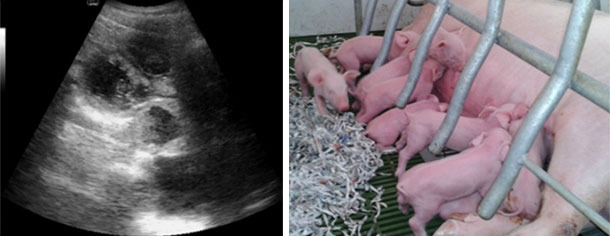
The pregnancy diagnosis and the control of the farrowings end the process.
Three years ago we started a non-surgical embryo transfer programme together with the company Selección Batallé SA, Girona, (Spain). In this programme, using Duroc sows, and with more than 150 non-surgical embryo transfers carried out, a fertility of 80% and a prolificacy of 9.5 born piglets were obtained, using 30 fresh embryos per recipient sow.
The results of the programme show that the number of donors needed per recipient sow can be effectively reduced from 2 to 1.5 by means of the superovulation of the donors (Angel et al., 2013). Also, it has also been established that a lack of synchronicity of the recipient sows that exceeds 24 hours (recipient sows that come into heat 24 hours later than the donor sows) is ideal for the success of the embryo transfers (Martinez et al., 2013). Finally, a protocol for the preservation of the fresh embryos for a period of 24 h has been developed that allows their national or international transportation from the donor to the recipient farm. The results of this study show that a high fertility and prolificacy can be reached in the recipient sows by using fresh embryos preserved at 37ºC for 24 h. In spite of this, the best would be to use cryopreserved embryos, because they can be kept indefinitely and transferred when needed.
The development of the non-surgical embryo transfer with cryopreserved embryos would entail enormous and very important benefits for the swine genetic companies, because:
1) it would allow to provide animals with a high genetic value from the selection nucleus of the swine genetics companies to the farrow-to-finish farms of the clients without time limitations,
2) it would simplify the international transportation of animals avoiding problems related to animal welfare,
3) it would allow the company to introduce its genetics with the maximum health guarantees in emerging markets,

and 4) it would allow the unlimited preservation of genetic material, which is something basic when faced with eventual health crises.
Currently, vitrification is the only efficient method for the cryopreservation of pig embryos. The investigations carried out in the last years have given, as a result, that a high percentage (80-95%) of the embryos without any kind of previous treatment, survives, in vitro, the vitrification and heating processes. In spite of these excellent results, there are few studies that establish the in vivo survival of the vitrified embryos.
Our results show that we can obtain a high fertility (75%) and prolificacy (10 born piglets per farrowing) when the vitrified embryos are transferred to the recipient sows surgically. Unfortunately, when these embryos are transferred by means of non-surgical embryo transfer, the fertility drops (50%), although the size of the litter keeps the same (Martinez et al., 2013). It is obvious that it is necessary to carry out more investigations in order to increase the fertility of the recipient sows when both technologies are used together.
The results described here show that in pigs, the non-surgical embryo transfer is currently a reality. The procedure is simple, safe, quick and well tolerated by the recipient sows. The excellent results obtained with the use of this technology together with fresh embryos, and the promising results reached with cryopreserved embryos represent a fundamental progress for the commercial use of ET in the pig industry in the short term.
Acknowledgements
The mentioned studies have been partially financed by CDTI/S.Batalle (20090686), MICINN-FEDER (AGL2009-12091), MINECO-FEDER (AGL 2012-38621), and SENECA (GERM04543/07).




